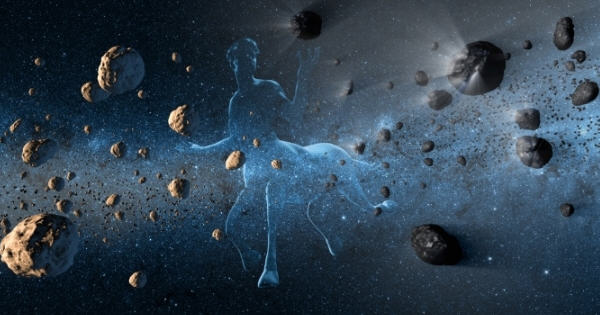The findings declare that roughly 66 percent in the centaur population are comets. NASA’s Wide-area Infrared Survey Explorer (Wise) has revealed the actual identity in the mysterious space centaurs. Centaurs will be the diminutive celestial objects circling the sun's sun rays between Jupiter and Neptune. To date, their true identity was one of the extended-lasting mysteries of astrophysics, in line with the space agency. Now, a completely new report signifies that lots of centaurs are comets.
Formerly, scientists believed that centaurs might be asteroids thrown within the inner pv system or comets moving toward the sun's sun rays from great distances. These celestial objects are named following a creature in Greek mythology whose mind and torso are human and legs are people from the equine.
“Just like the mythical creatures, the centaur objects appear to experience a double existence,” mentioned James Bauer of NASA’s Jet Space Laboratory. “Our data indicate a cometary origin for almost all the objects, suggesting they are coming initially from from much much deeper within the pv system.”
“Cometary origin” signifies the celestial object is probably built-in exactly the same material just like a comet, likely was a dynamic comet in the past existence, and may enter into action again.
The final results vary from finest infrared survey to data of centaurs in addition to their remote relatives, known to as scattered disk objects. NASA reviews that NEOWISE collected infrared images more than 50 centaurs and scattered disk objects. Additionally, NASA notes that 15 in the 52 are new findings.
In line with the space agency, centaurs and scattered disk objects circle inside an unstable belt. Eventually, gravity within the large planets will fling them either closer to the sun's sun rays or further away from their current places of residence.
Formerly, NASA’s Spitzer Space Telescope discovered some evidence of comets inside the group and scientists spotted some centaurs with dusty halos (a typical manifestation of outgassing comets). However, astronomers was unable to search for the levels of comets and asteroids.
Infrared data from NEOWISE offered info on centaurs’ reflectivity to assist astronomers with sorting the people of celestial physiques. NEOWISE could see whether a centaur features a dark surface or possibly a shiny the one that reflects plenty of light. By mixing the reflectivity data in what have been recorded in regards to the colors in the objects, scientists could solve the mystery. Visible-light data has revealed centaurs generally being either blue-gray or red-colored in hue. NEOWISE states a lot of the blue-gray objects are dark, a apparent indication the objects are comets.
“Comets have a very dark, smoke-like coating by themselves icy surfaces, causing them to be deeper than most asteroids,” mentioned co-author Tommy Grav in the Planetary Science Institute. “Comet surfaces are generally a lot a lot more like charcoal, while asteroids are frequently shinier like the moon.”
The findings declare that roughly 66 percent in the centaur population are comets, which derive from the cold outer reaches within our pv system. Astronomers hope that NEOWISE is constantly on the unwrap the mysterious character of centaurs.
The study’s findings are known to thorough inside the Astrophysical Journal.
Popular Posts
-
When Keith Jenkins plans a trip, he doesn't need to cobble together vacation days, or frequent flier miles, or scour the internet for ...
-
Falling profits from apple iphone sales and powerful interest in Universe mobile phone models mix to finish California firm's four-yea...
-
Lady Gaga can't keep her clothes on. Under each week carrying out a nude picture from the pop singer leaked online, Mother Monster ba...
-
Microsoft Boss Steve Ballmer notifies employees that Home home windows 8 has deflated. A turnaround relies upon Home home windows 8.1 an...
-
The findings declare that roughly 66 percent in the centaur population are comets. NASA ’s Wide-area Infrared Survey Explorer (Wise) has r...
-
Taylor Swift gave fans an interior consider her friendship with Selena Gomez this year's week. On Monday, which so been Selena's 2...
-
Google on Wednesday formally revealed its next-generation Nexus 7 tablet, making its debut inside a couple of days. But because the dazzling...
-
Google has introduced a minimal-cost competitor to Apple TV - a "dongle" device known as Chromecast. The dongle is blocked right...
-
Traders and customers are awaiting Apple's next breakthrough innovation. It’s been nearly 2 yrs since Jobs died.. Since that time, Ap...
-
The train races into view, too as with only a heartbeat, the cars derail and crash in to a wall of concrete, flipping onto their sides and ...












0 comments:
Post a Comment